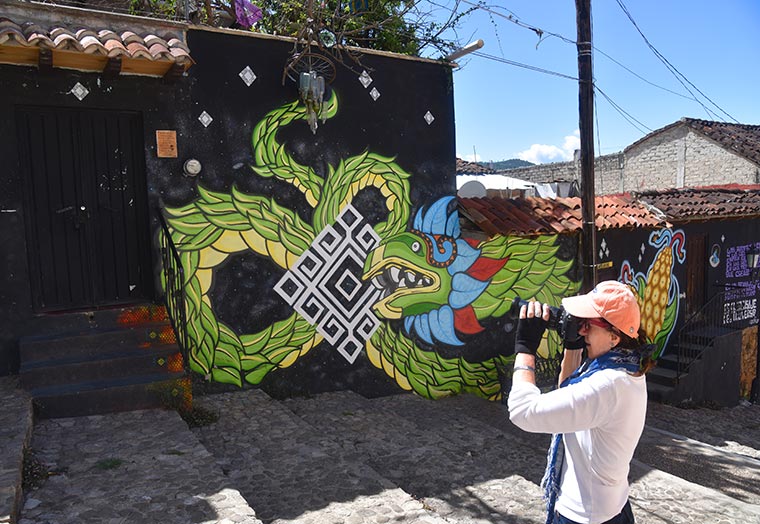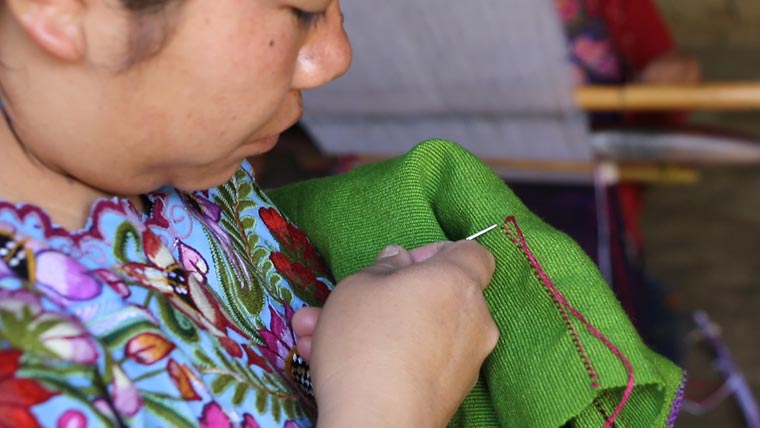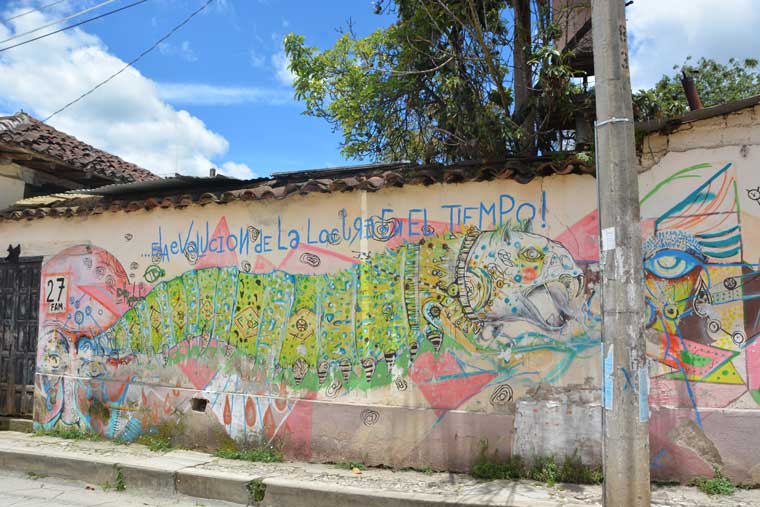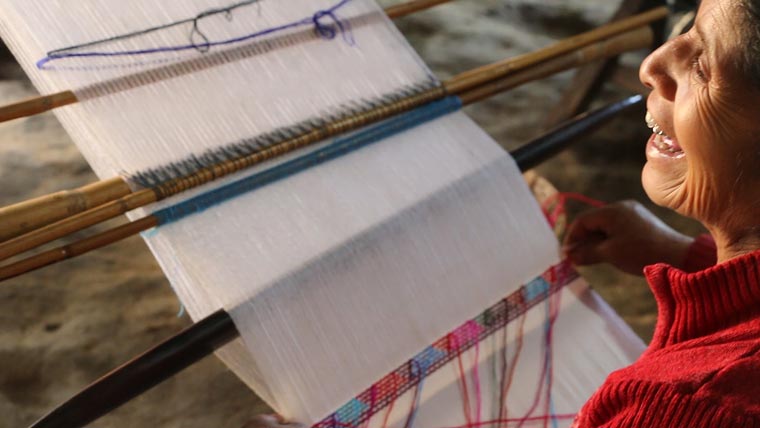Experimental filmmaker Robin Starbuck makes dreamlike movies that keep her audience slightly off-kilter.

The Stag’s Mirror, a new experimental short film by Robin Starbuck (filmmaking and moving image arts) about Chiapas, Mexico, draws its inspiration, and much of its evocative text, from Rosario Castellanos’ 1962 novel, The Book of Lamentations.
“Shear it again, then weave” is one phrase borrowed from the story of a fictionalized Mayan uprising. In the film, the phrase refers to several things at once: the handicrafts Chiapas is famous for; the hard-working life led by the indigenous women shown on screen spinning their wool; and what Castellanos—whose narrative foreshadowed the violent uprising that would erupt in Mexico’s southernmost state some 30 years later—saw as the lurching process of revolution.
The same sentiment could apply to Starbuck’s work, which explores both the beauty and struggles of marginalized people in places like Chiapas. If those words are not tacked up in her studio somewhere, maybe they ought to be.
Shear it again, then weave.
“I love that line. … For me, it says everything about ‘cultural survivance,’” Starbuck says, invoking a phrase first coined by Anishinaabe scholar and writer Gerald Vizenor, who defined survivance, in part, as “the continuance of native stories.” Starbuck was speaking during a break from editing her latest film project, How We See Water, a longer companion piece to Stag’s Mirror, about the lives of two indigenous women in Chiapas that includes animated sequences sourced from local street graffiti.
Castellanos, Starbuck says, is not saying that revolution yields immediate results. “But rather, a people arrive at the point where they’ve got to do something, and hostility is the only answer,” she says. “As a result, some changes occur. But it’s a 10-steps-forward, six-steps-back issue.”
An artist, Starbuck contends, follows a similarly arduous path. “You try something,” she says. “You fail and you try it again, it disappoints, then you do it again, and you succeed a little bit at a time.”
“You try something. You fail and you try it again, it disappoints, then you do it again, and you succeed a little bit at a time.”
Starbuck is an adopted daughter of the Crow/Apsaalooke nation in Montana, a Native American tribe that’s been the subject of several of her films. (She’s currently producing one on the Apsaalooke Sun Dance ritual.) Her experience on the reservation prompted her interest in indigenous culture. She’s especially concerned with how traditions and myths, what she calls “the promises of the past,” can empower endangered groups. There’s a magical, dreamlike quality to her work, but as in the Chiapas films, it’s also full of temporal shifts, unsynced sounds, and text—all meant to connote deeper meanings and keep her audience a little off-kilter.
Starbuck often enlists Sarah Lawrence students and recent graduates to handle some of the camera and sound work and serve as translators. At the end of a day of filming, they’ve gained valuable experience.
“I’m not an ethnographer,” she says, “but when I am doing work in an ethnographic style, what I am doing is living within a culture and seeing what emerges for me as an artist. So there’s a lot of watching, looking, and accounting for—being receptive and open to filming whatever is happening that day. The students can be an integral part of that.”
For more about Robin Starbuck's work, visit robinstarbuck.com
Written by Shannon Mullen
Photos courtesy of Robin Starbuck



Scenes from How We See Water and Stag's Mirror